VIS 21B Indian Art
1/23
There's no tags or description
Looks like no tags are added yet.
Name | Mastery | Learn | Test | Matching | Spaced |
|---|
No study sessions yet.
24 Terms
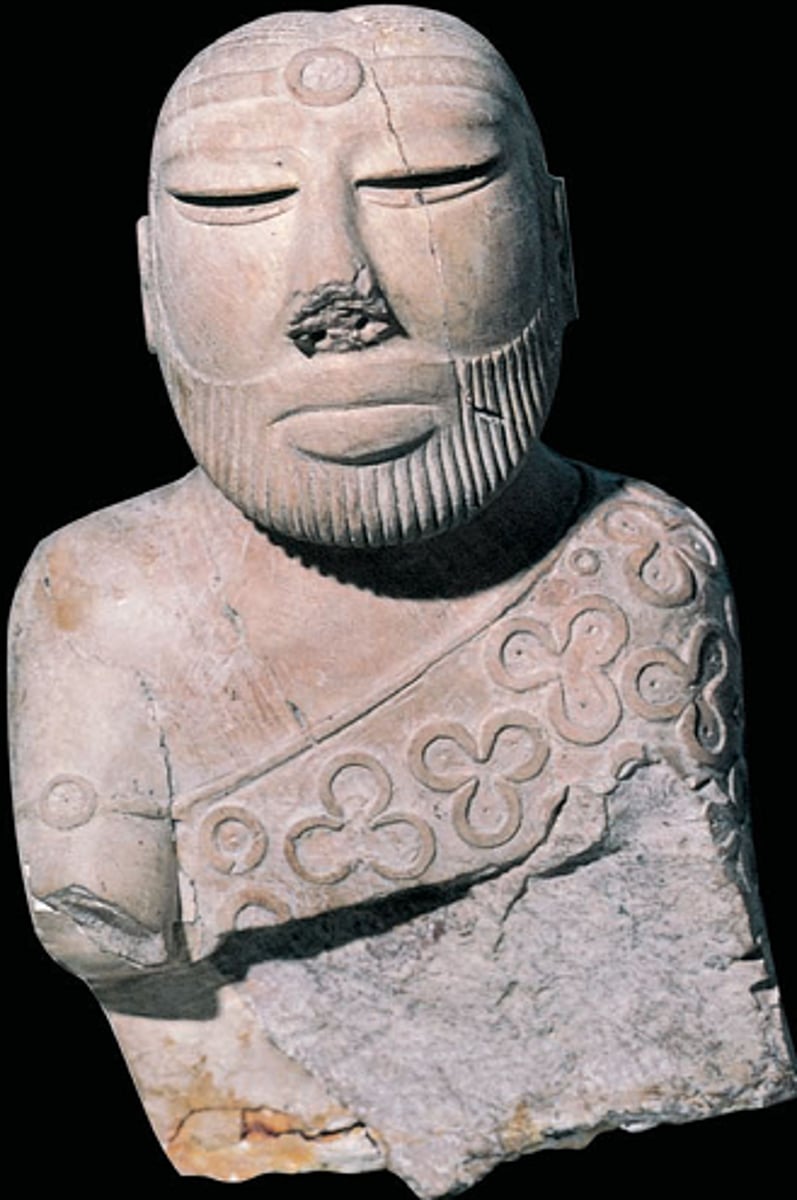
Title: High Priest (Bearded Man)
Site: Mohenjo-Daro, Indus Valley Civilization (Pakistan); 2300-1750 BCE
Material: Limestone
Unique facial features: long, downcast eyes, high nose, mouth with thick lips, big head, straight beard, jewel on head cloak
Formal (official) style; highly stylized
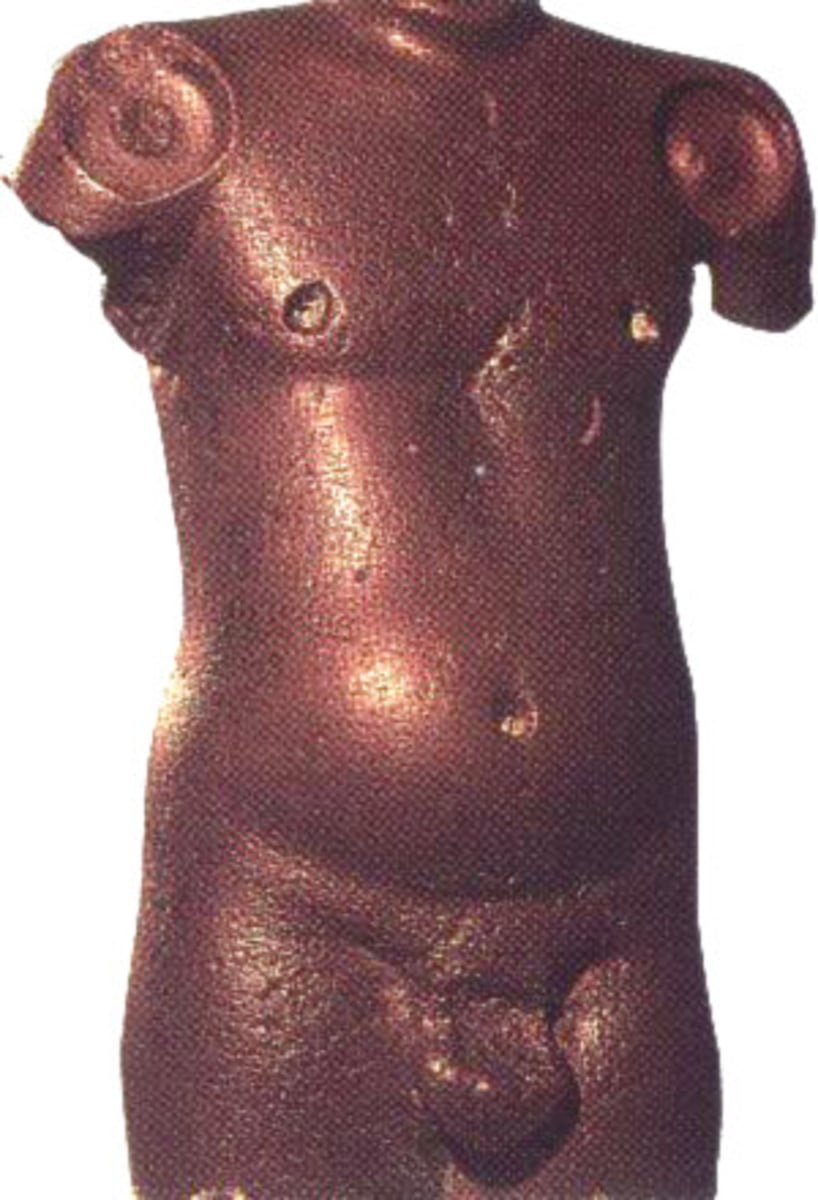
Title: Nude Male Torso
Site: Harappa, Indus Valley Civilization; 2300-1750 BCE
Material: Red sandstone
Full, rounded belly indicating health
Smooth transition on shoulder; unknown why circular marks on shoulders were made; head created separately and assembled
Organic style (more natural transitions between body parts)
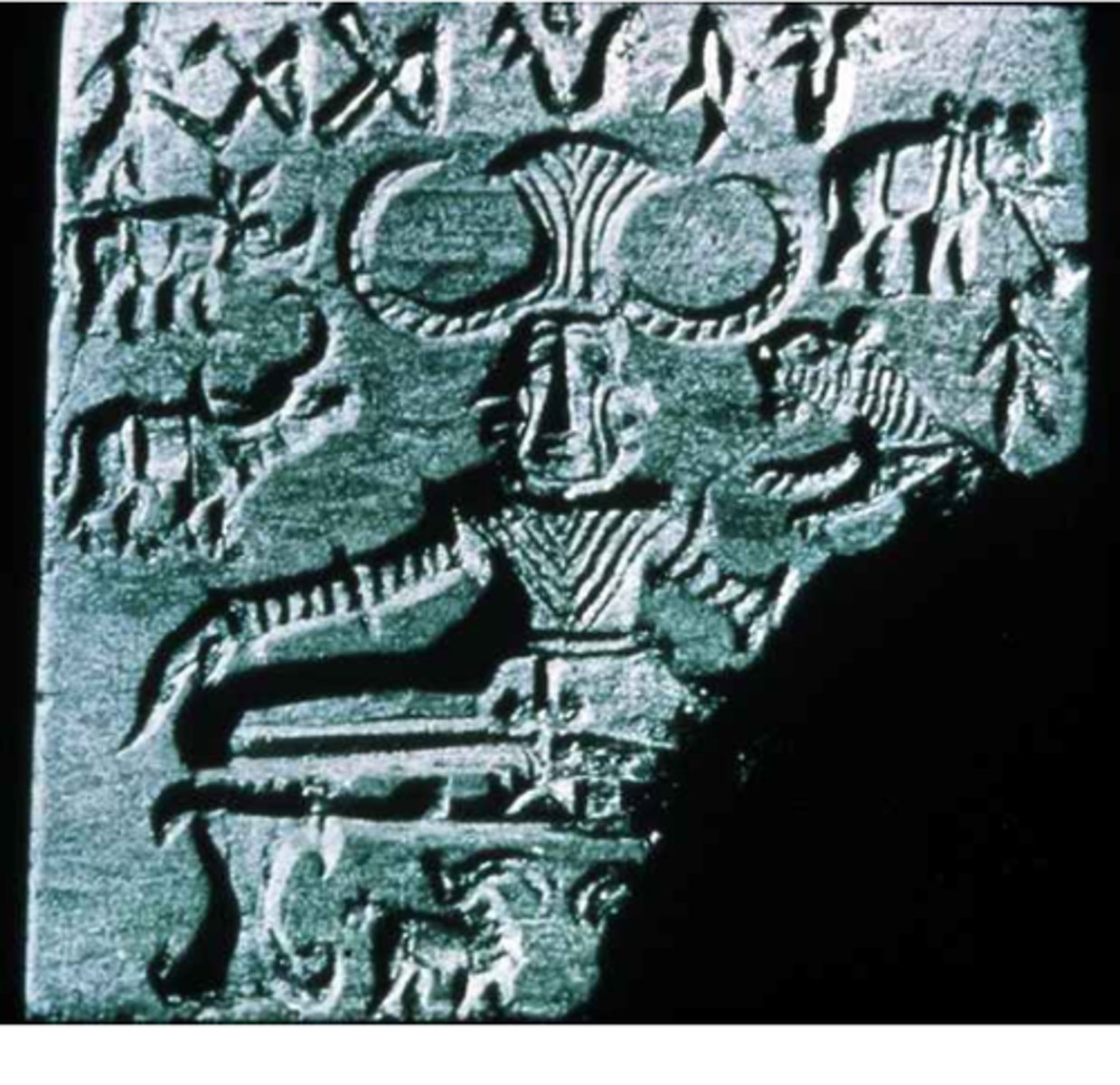
Title: Yogin Seal
Site: Mohenjo-Daro, Indus Valley Civilization; 2300-1750 BCE
Material: White steatite
Function: assumed by modern scholars to have been used as both form of identification and currency
Carved with animal drawings + lost script language. Organic style.
yogi or shaman depiction possibly an early influence for later images of goddess Shiva
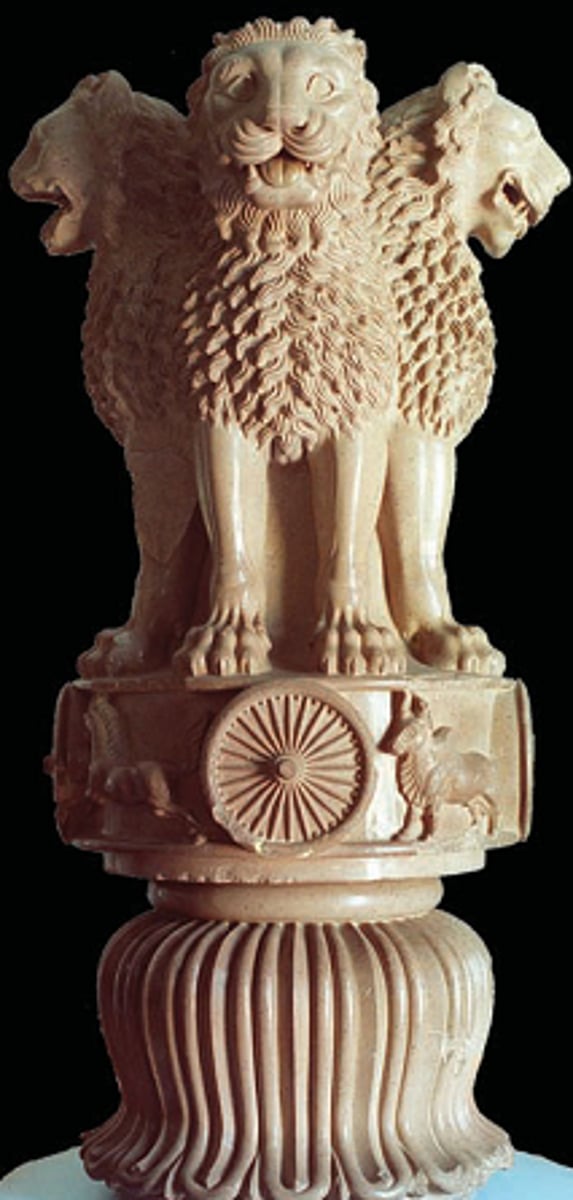
Title: Lion Capital
Site: Sarnath, Maurya Period
(ca. 274-237 BCE)
Material: Polished Chunar sandstone
Smooth shiny surface. Stylized mane of lion from Persian influence; rest of capital more organic style.
Aniconic period (no visual representation of Buddha)
Lion linked to royal family (Shaka clan) associated to Buddha & his teachings. Dharma chakra wheel of law represents Buddha's teachings of the path to Nirvana/Enlightenment.
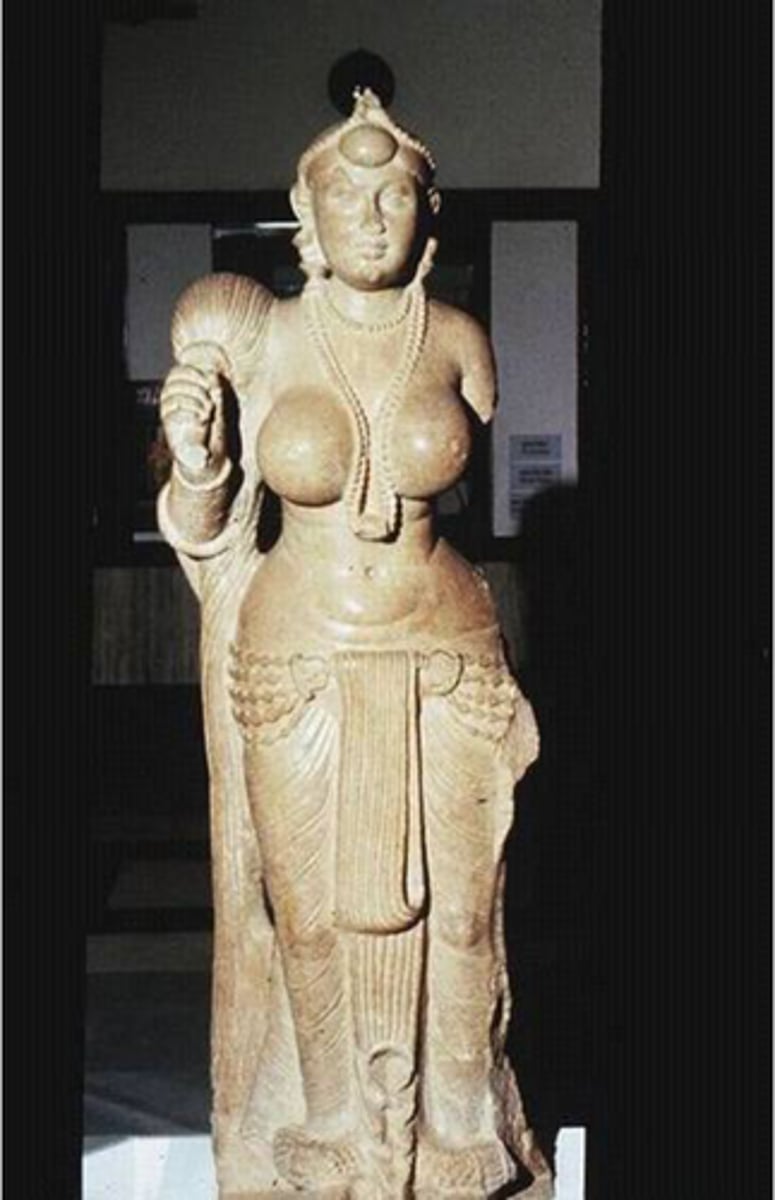
Title: Chauri Bearer
Site: Didarganj near Patna, Maurya Period (ca. 3rd Century BCE)
Material: Polished sandstone
More naturalistic, decorative ornaments. Smooth shining surface. Life-sized free standing sculpture
Narrow hips, wide waist. Typical depiction of female in Indian art - suggests fertility.
Wide open eyes, thick lips, chubby face representing wealth and health
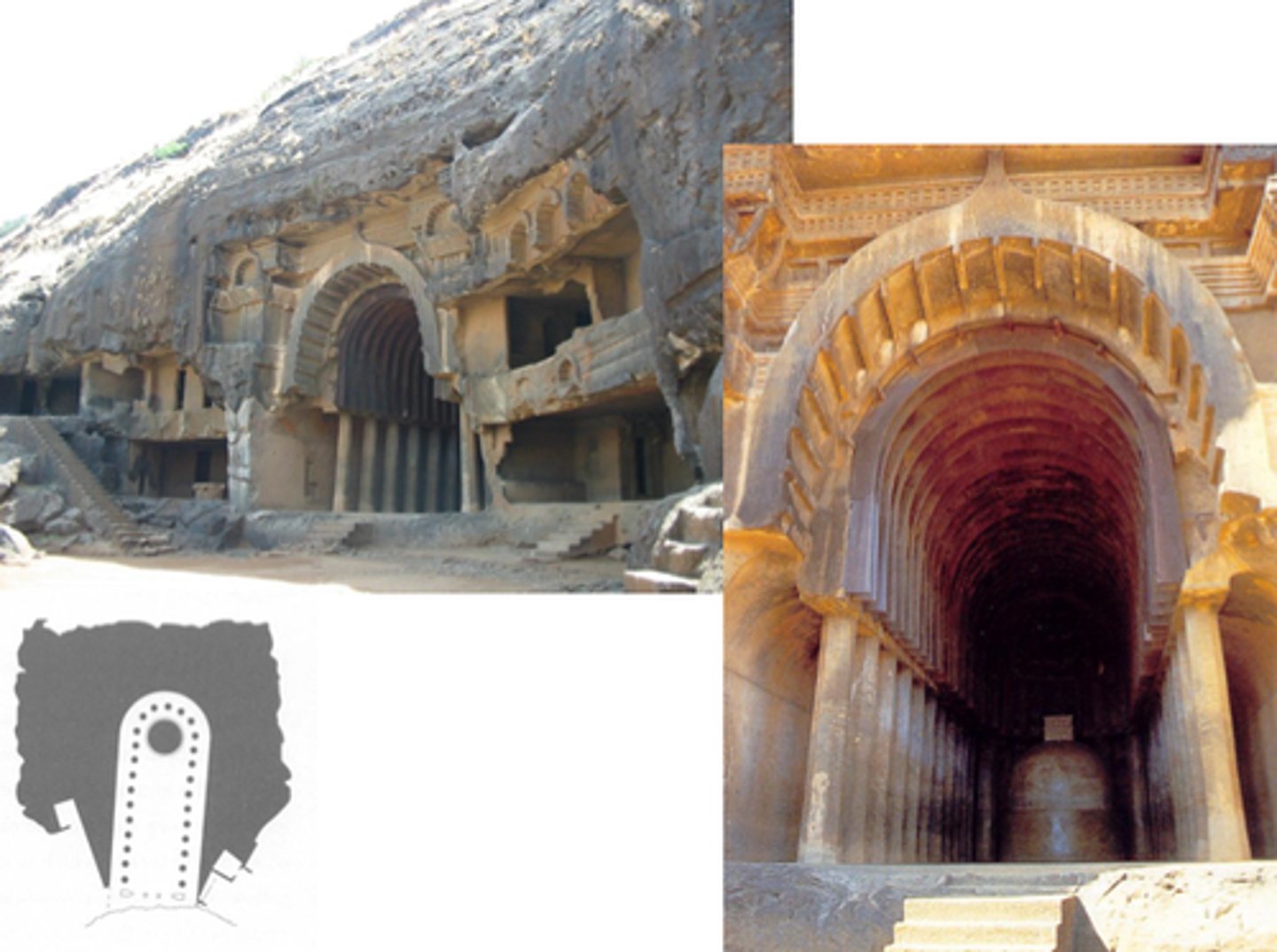
Title: Chaitya Hall w/ Stupa
Site: Bhaja, Late Shunga Period (ca. 1st Century BCE)
Stupa - dome that stores relics,
Cave, function for worshipping Buddha
Vihara - space for monks to live
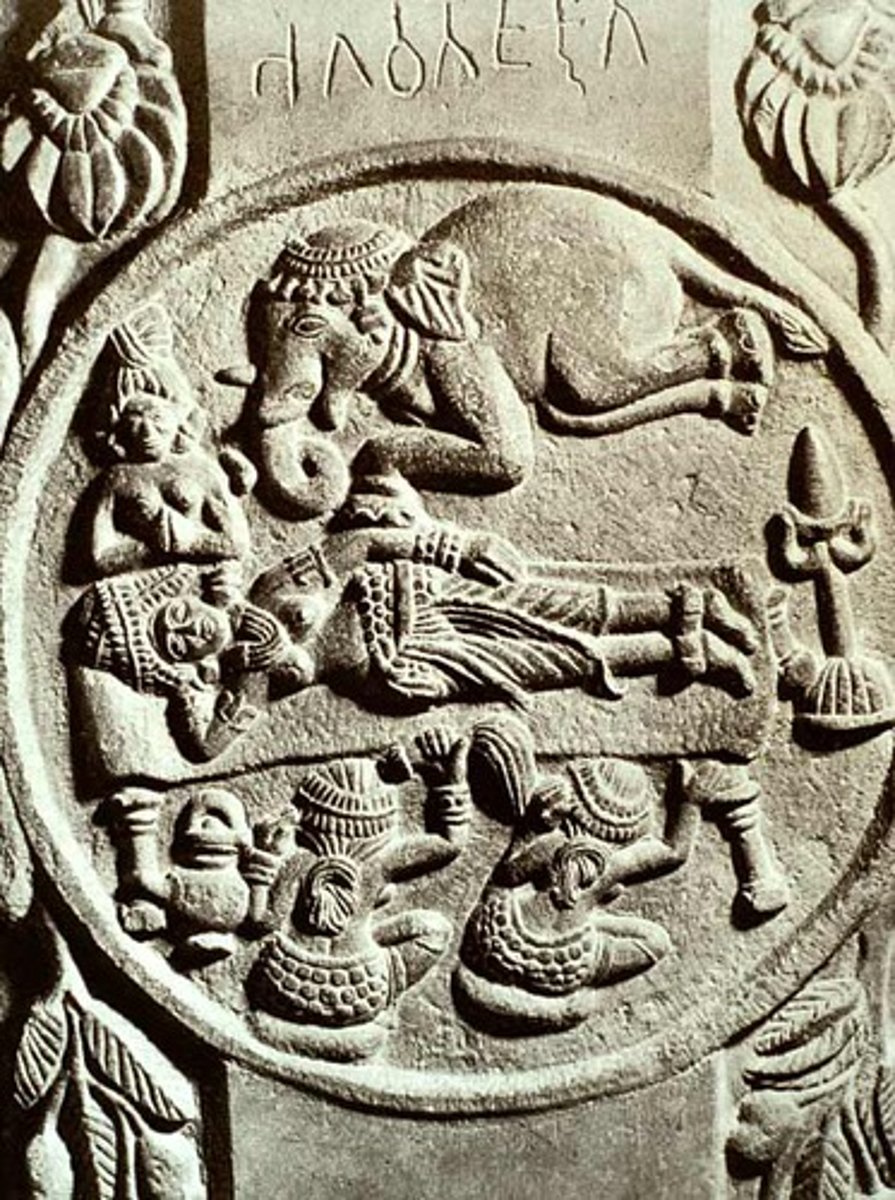
Title: Dream of Queen Maya
Site: Bharhut Railing c. 100-80 BC
Material: red sandstone
typical depiction of fertile woman
stone "medallion" depicts story of the conception of the Shakyamuni Buddha
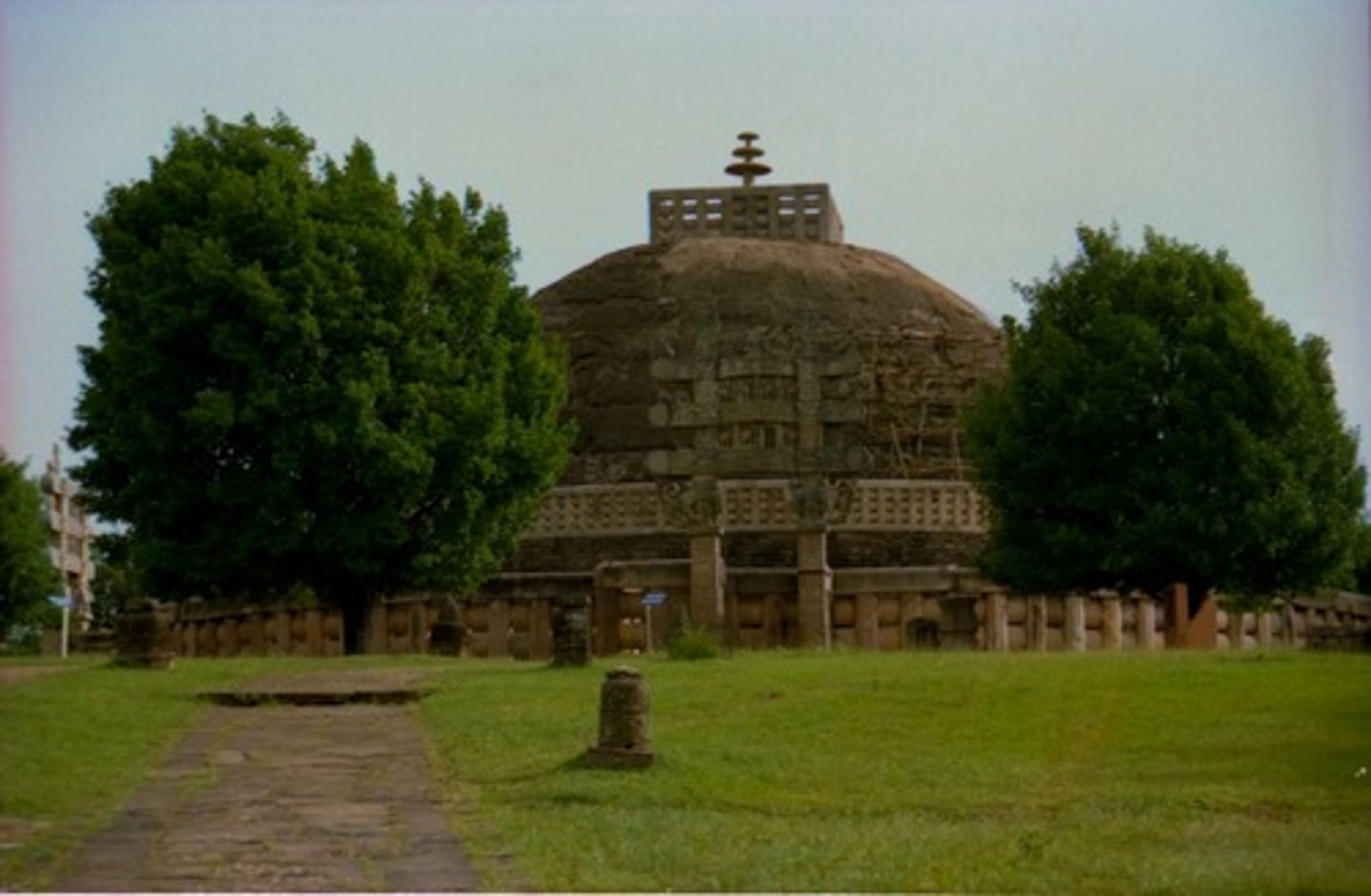
Title: The Great Stupa at Sanchi
Site: Sanchi, Shunga and early Andhra Period (3rd Century BCE to 1st Century CE)
Older stone structure in India.
Chattra - umbrellas protect Buddhist universe
yasti - central axis of Buddhist universe
harmika- rectangular region above the main dome
anda - main round area

Title: Torana (Gate) and Bracket figure (Yakshi)
Site: The Great Stupa at Sanchi (1st Century CE)
Material: Stone
Goddess of nature/trees. Also related to prosperity.
Heavy decorative ornaments on the waist and neck + earrings + headdress + palms (very detailed depiction, realistic representation)
Full belly - healthy, symbol of wealth
Realistic depiction of human body, stylized depiction of tree trunks and leaves.
typical Yakshi pose: One leg holding entire weight of body, other leg bent. One arm reaches upward to tree branch, other arm holding tree trunk
Torana (entrance gate) surrounds the Stupa.
Three horizontal connections of the two main columns called architraves depicted life of the Buddha or jatakas
Understand Buddhist teachings without being able to read (images + carvings). Educations for pilgrims coming to holy sites (and uneducated)
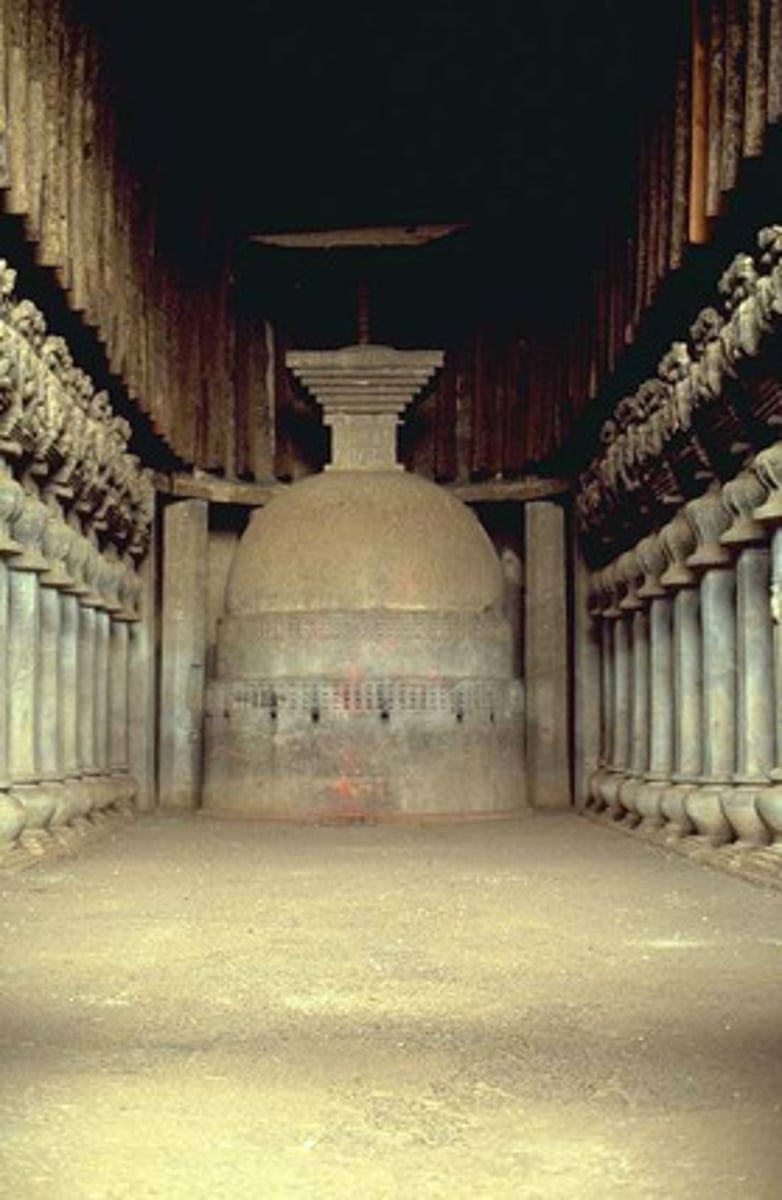
Title: Great Chaitya Hall
Site: Karle, Shunga + Andhra Period (2nd Century)
Material: Cut from living stone
Highly similar design of hall with stupa at end of long hall lined with columns
increased decorative carvings compared to Chaitya hall in Bhaja
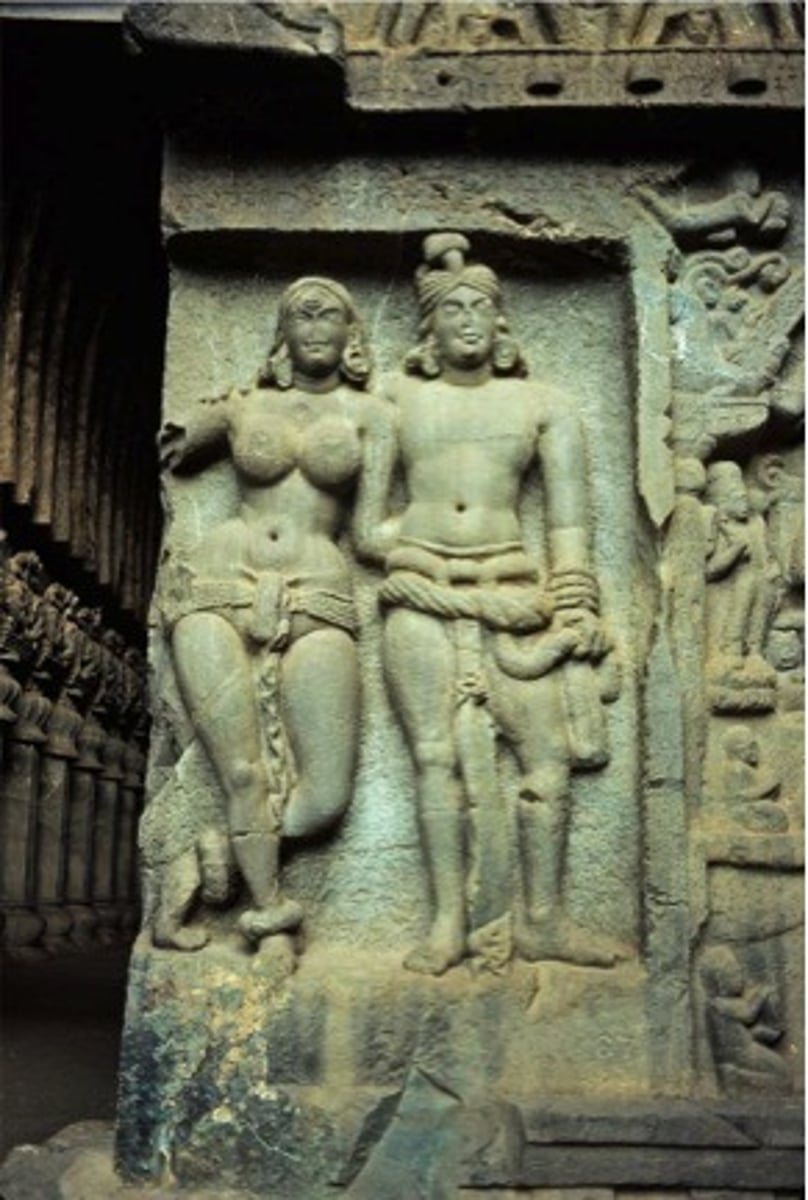
Title: Mithuna Couples (Yaksha and Yakshi)
Site: on the facade of the Great Chaitya Hall, Karle, Shunga + Andhra Period (2nd Century)
Material: stone relief
Similar resemblance to Yaksha (male, stiff) and Yakshi (female, weight supported on right leg, relaxed left leg) image
Before Yaksha and Yakshi would always be separated, now always represented together to help the Buddhist universe
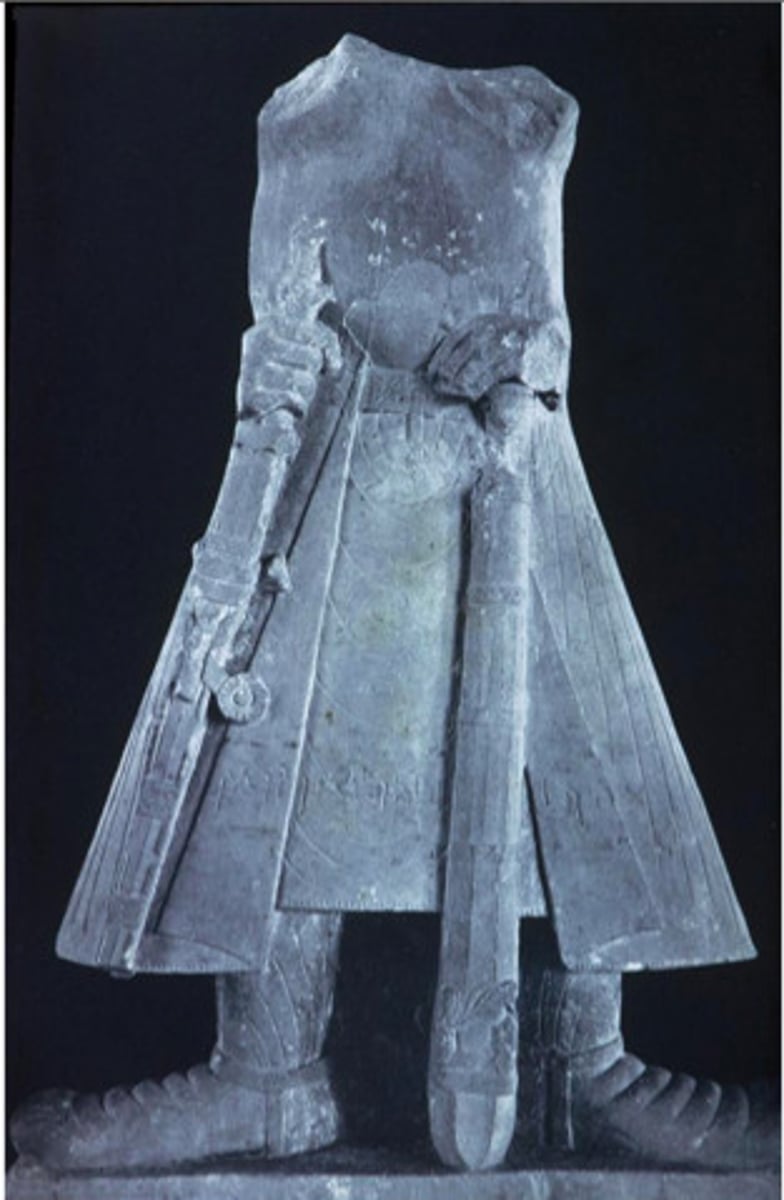
Title: Portrait of Kanishka I
Site: Mathura region, Kushan Period (c. 120 CE)
Material: Red Sandstone
abstract, geometric style very different from rest of Indian art
influences Mathuran style Buddhist art of the Kushan period
Kushan dynasty established by eastern Iranian people
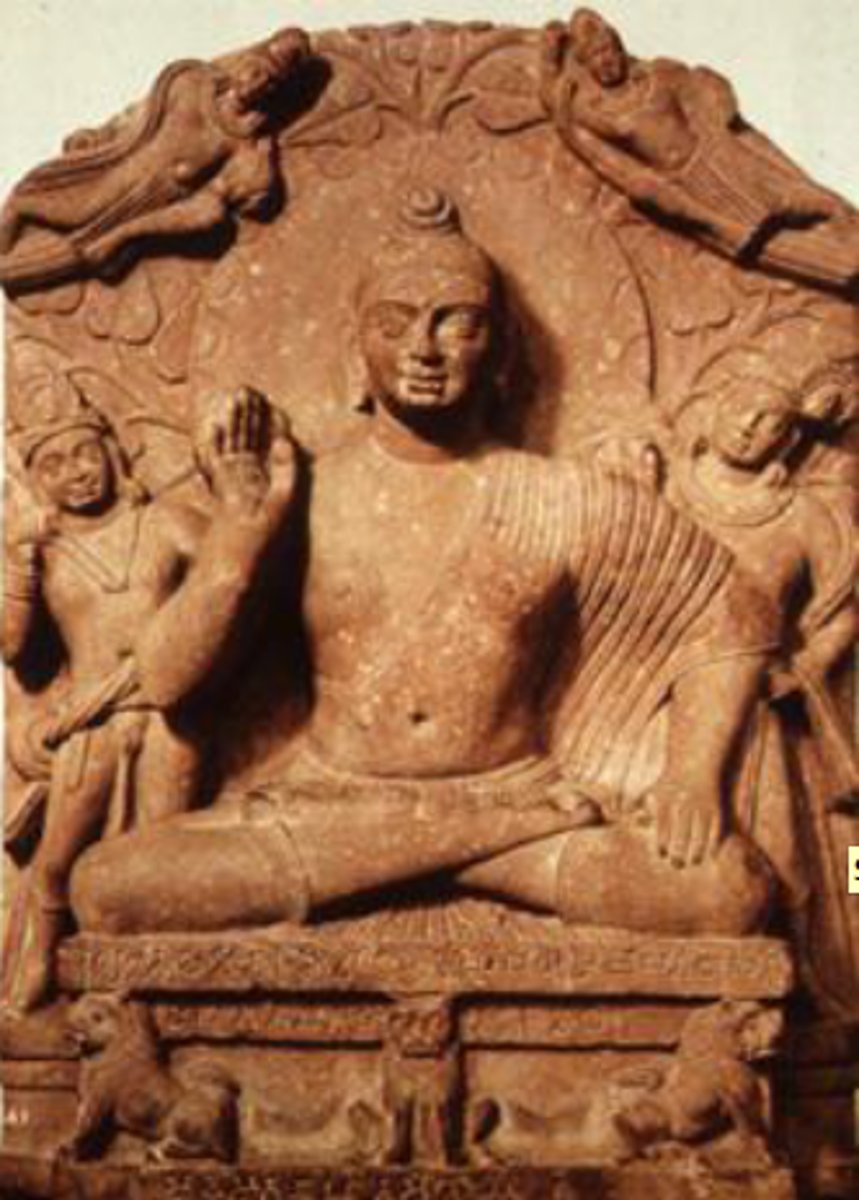
Title: Seated Buddha with Attendants
Site: Mathura region, Kushan Period (2nd Cent.)
Material: Red sandstone
Elongated ear, yogi posture (one leg crossed, standard posture for all Buddha images). Robe on one shoulder, Ushnisha hair style + mudra hand gesture
Accompanied by Boddhisatva, help Buddha to preach Buddhism religion. Bodhisattva images always smaller than Buddha image because of hierarchical order in the Buddhist universe.
Apsara - serve as entertainers in the Buddhist world
Vajra - power
Lotus flower - compassion
MUDRA ABHAYA (fear not)
Wide open eyes, thick nose, thick lips, childish face. Characteristic facial features closely resembles that of previous dynasties. Smiling mouth facial expression (new in the Kushan Period)
More organic body, traces back to Indus Valley Civilization
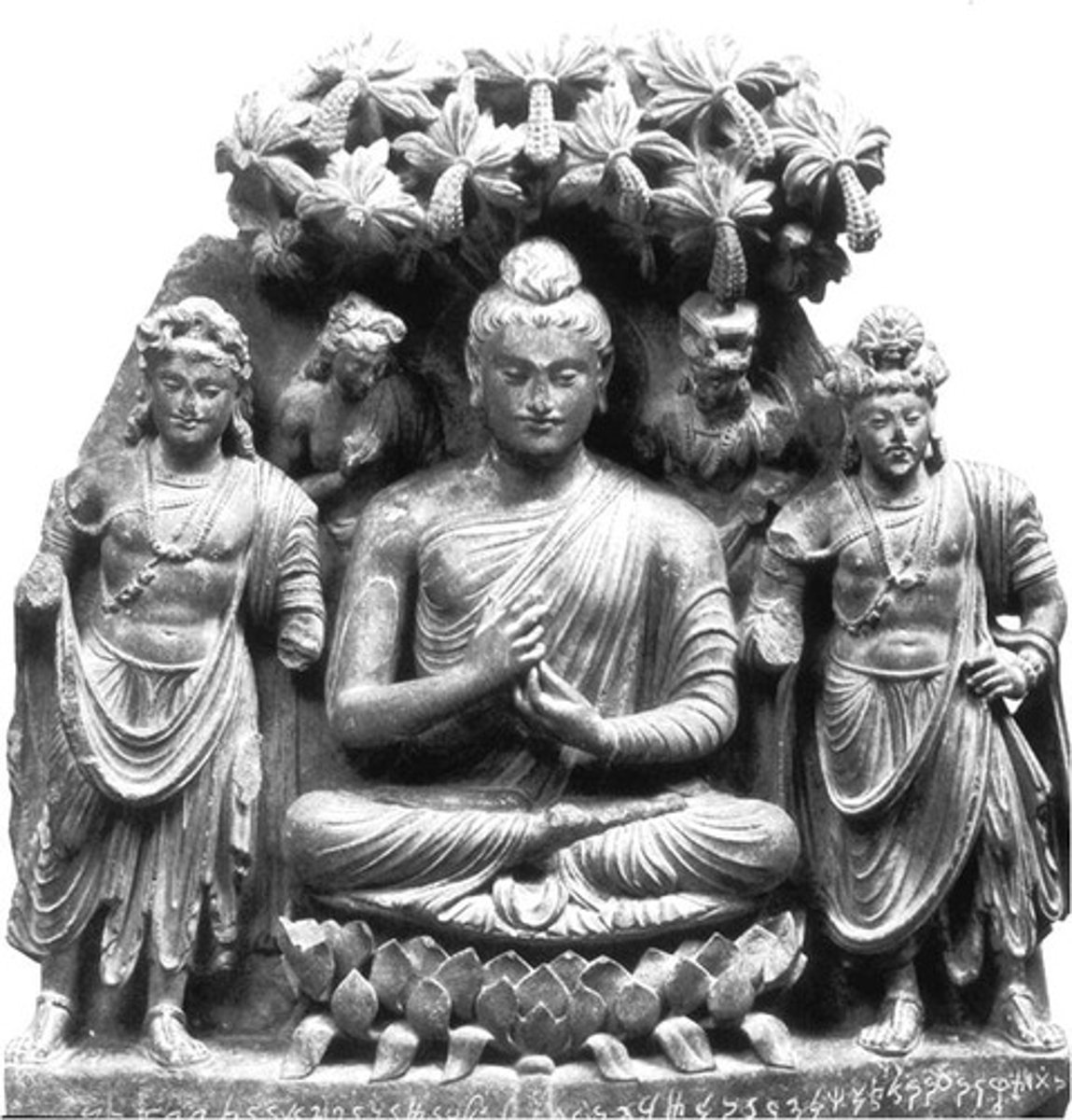
Title: Buddhist Triad
Site: Gandhara region, Kushan Period (ca. 182 CE)
Material: Grey stone (schist)
Maitreya - future Buddha
Avalokiteshvara - compassionate aspect of Buddha
two figures behind observing are Hindu deities Brahma and Indra
Many similarities to Mathura style (ushnisha, long ears, yogi seated posture, hands)
Mudra - Dharma Chakra (Teaching)
tree above and lotus upon which Shakyamuni is seated are intricately carved
Difference in features (more European influenced style - wide chest, broad shoulders, buff arms, thin lips, curved hair). European curved lines of hairs for ushnisha
half-closed eyes reminiscent of downcast eyes of earlier Indian artwork

Title: Standing Bodhisattva
Site: Gandhara region, Kushan Period (2nd Century)
Material: grey stone (schist)
Facial features, masculine body shape, influenced greatly by Greco-Roman style because of conquests of Alexander the Great.
Same iconography, artistic style drastically different
pedestal images remain more uniquely Indian in style
bodhisattva is Maitreya (future) Buddha
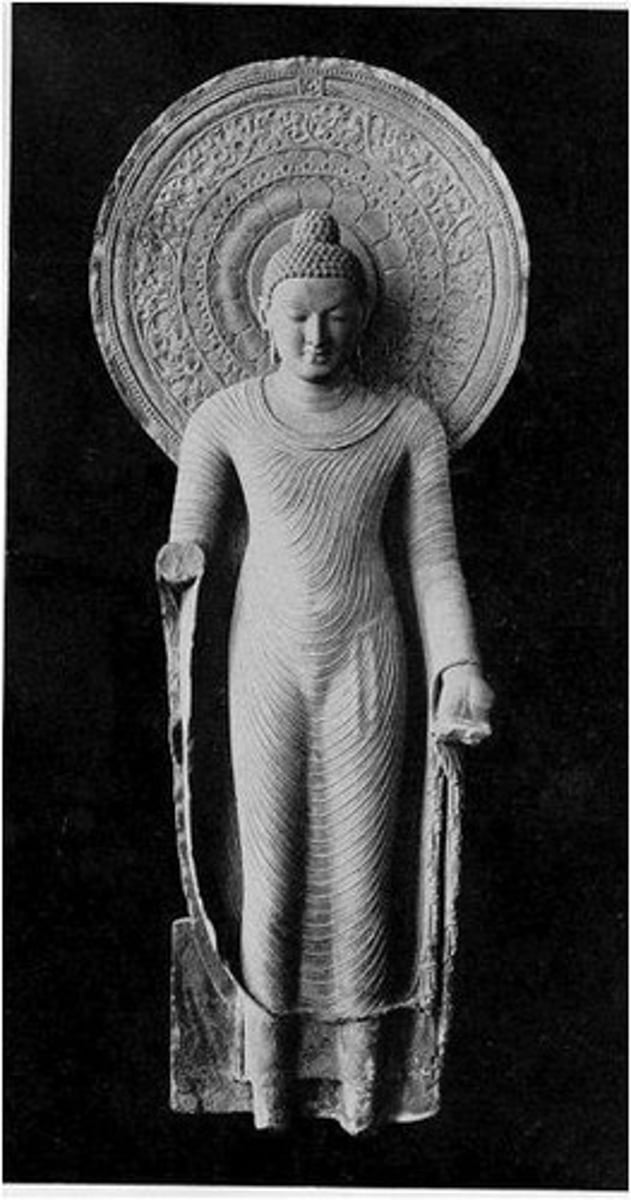
Title: Standing Buddha
Site: Mathura, Gupta Period (early 5th Century)
Material: Red sandstone
Gupta Style: Combination of Mathuran and Gandharan style
combines rounded, softer features of Mathuran style with the sharper European-influenced Gandhara style
EXCEPTION: carving of robe much more natural and less stylized in Gandharan style; lines across clothing from Mathuran stylized clothing
Buddhist iconography does not change much from earlier periods
Three wrinkles on the neck (unique to Gupta Style)
halo decorated with geometric patterns
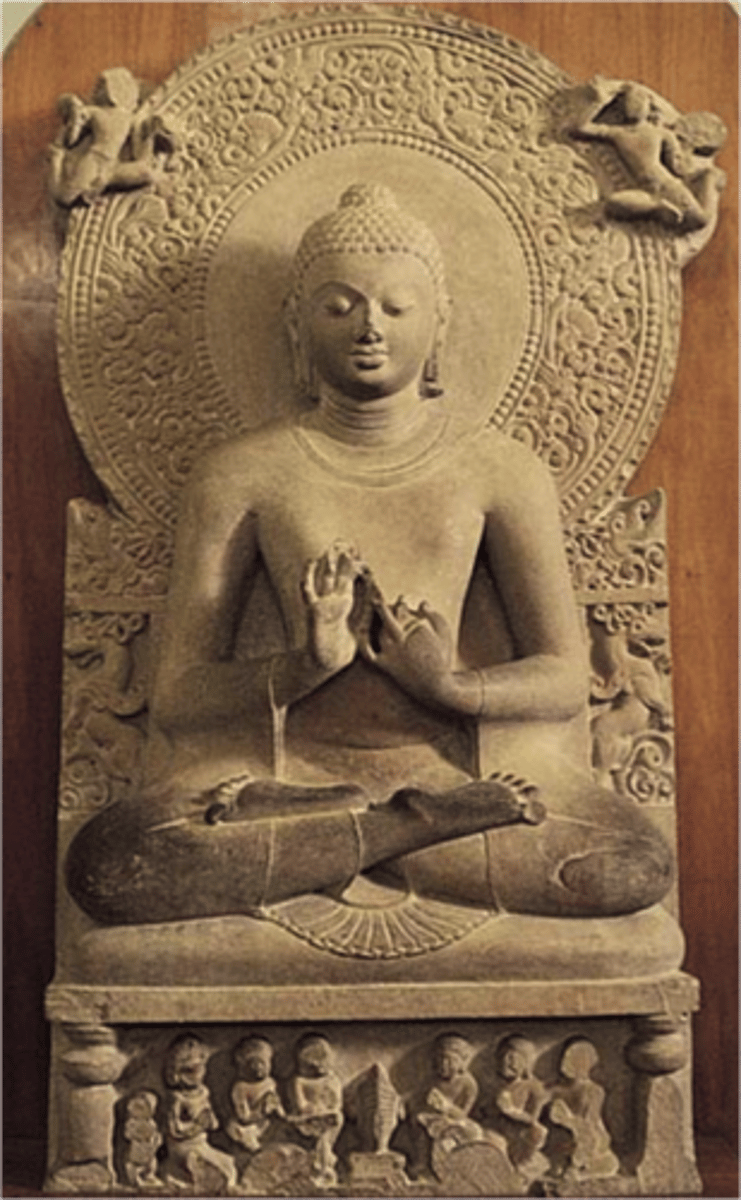
Title: The First Sermon
Site: Sarnath, Gupta Period (c. 475)
Material: Chunar sandstone
Buddha in familiar seated pose, but without Boddhisatva flanking him
Ushnisha hair style, seashell-like pattern on hair
mudra - dharma chakra - preaching Buddhist law
two deer and spectators surround wheel of law in the pedestal
halo of background stone more intricately decorated
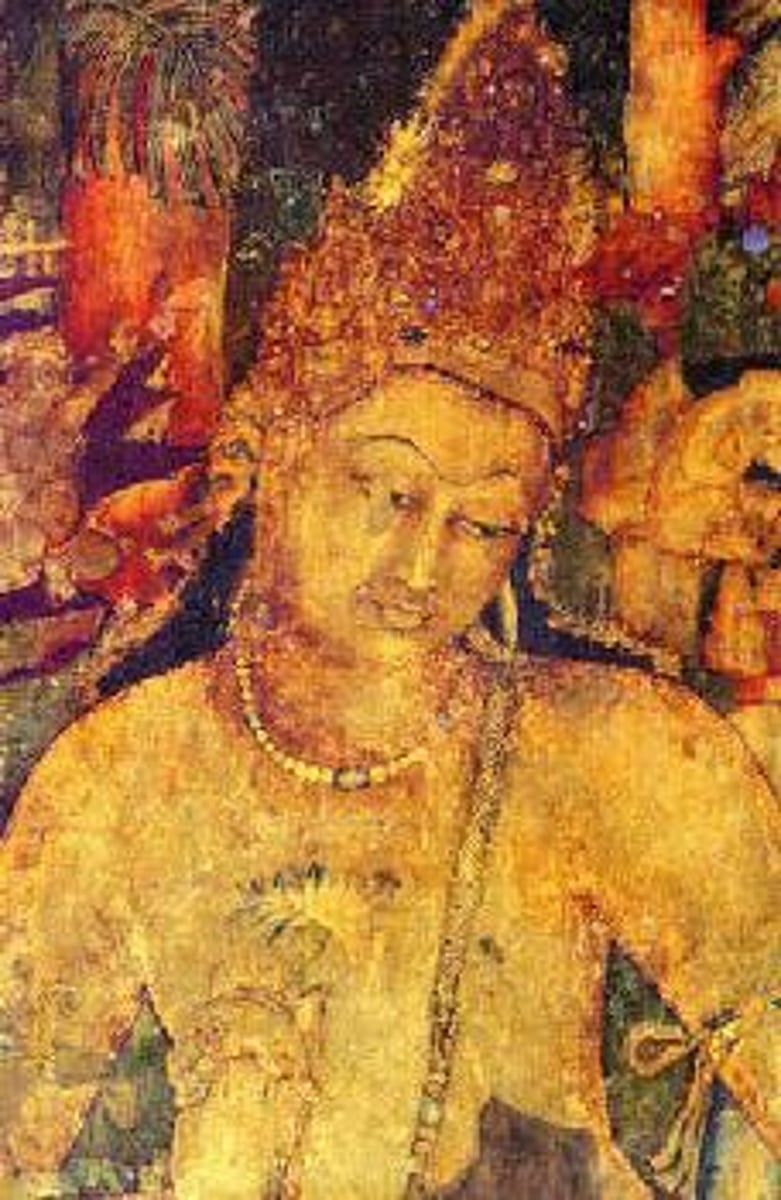
Title: The Beautiful Bodhisattva Padmapani
Site: Cave I @ Ajanta, Gupta Period (5th cent.)
Material: fresco painting on cave wall
bodhisattva image representing the compassionate aspect of Buddha
see beginnings of use of shadowing and color to obtain depth in Indian painting
keeps downcast eyes, thick lips, and other facial features characteristic of Indian art
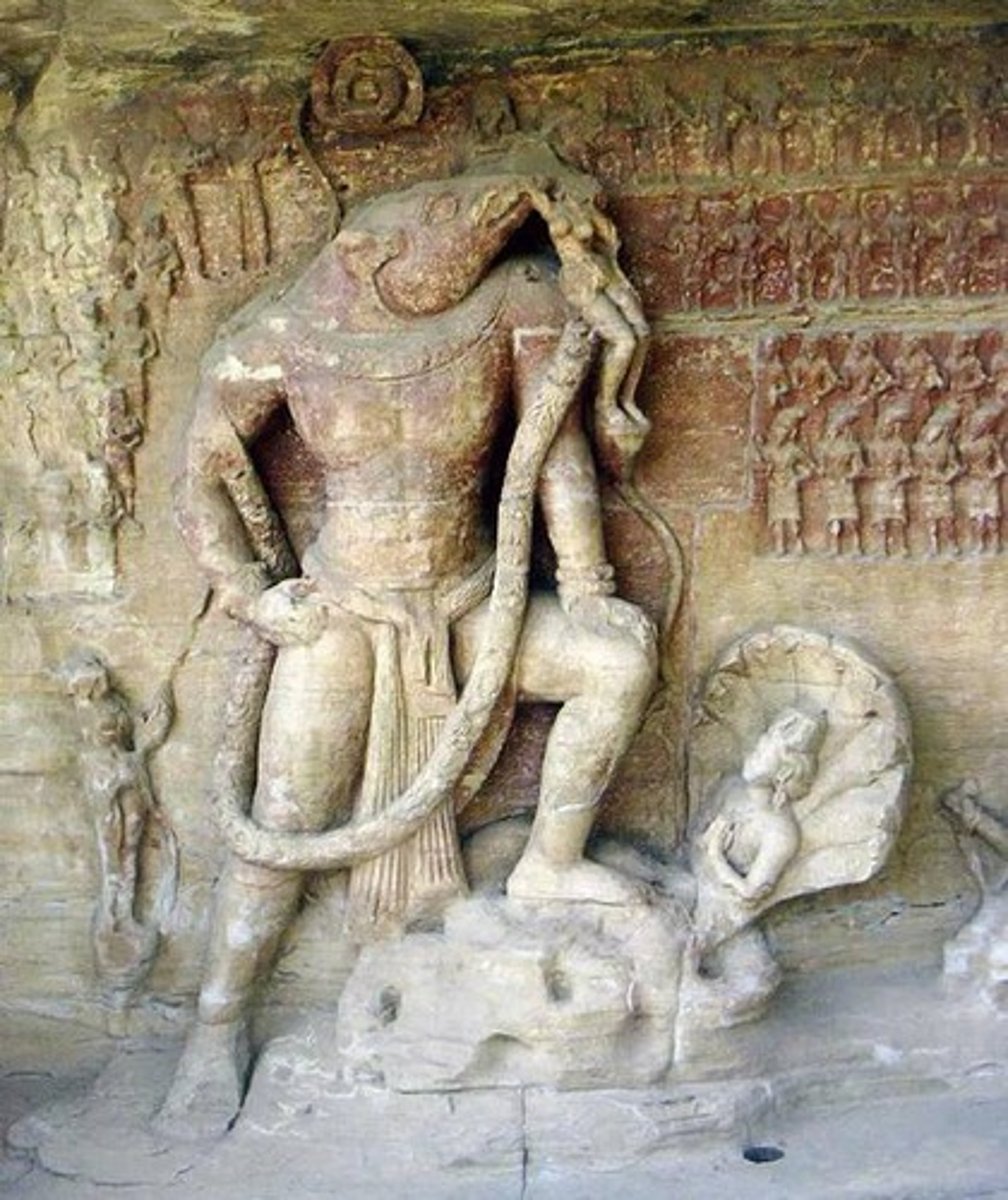
Title: Boar Avatar of Vishnu
Site: Udayagiri Cave 5, Gupta Period (c. 400 CE)
Material: cut from sandstone cave
depicts one of three major Hindu gods, responsible for preservation of universe
saving small figure of river goddess from Naga king, who Vishnu stands atop; Naga king shows respect to Vishnu through hand gesture
boar avatar one of ten or twenty-four avatars associated to Vishnu's different reincarnations, which include Shakyamuni Buddha
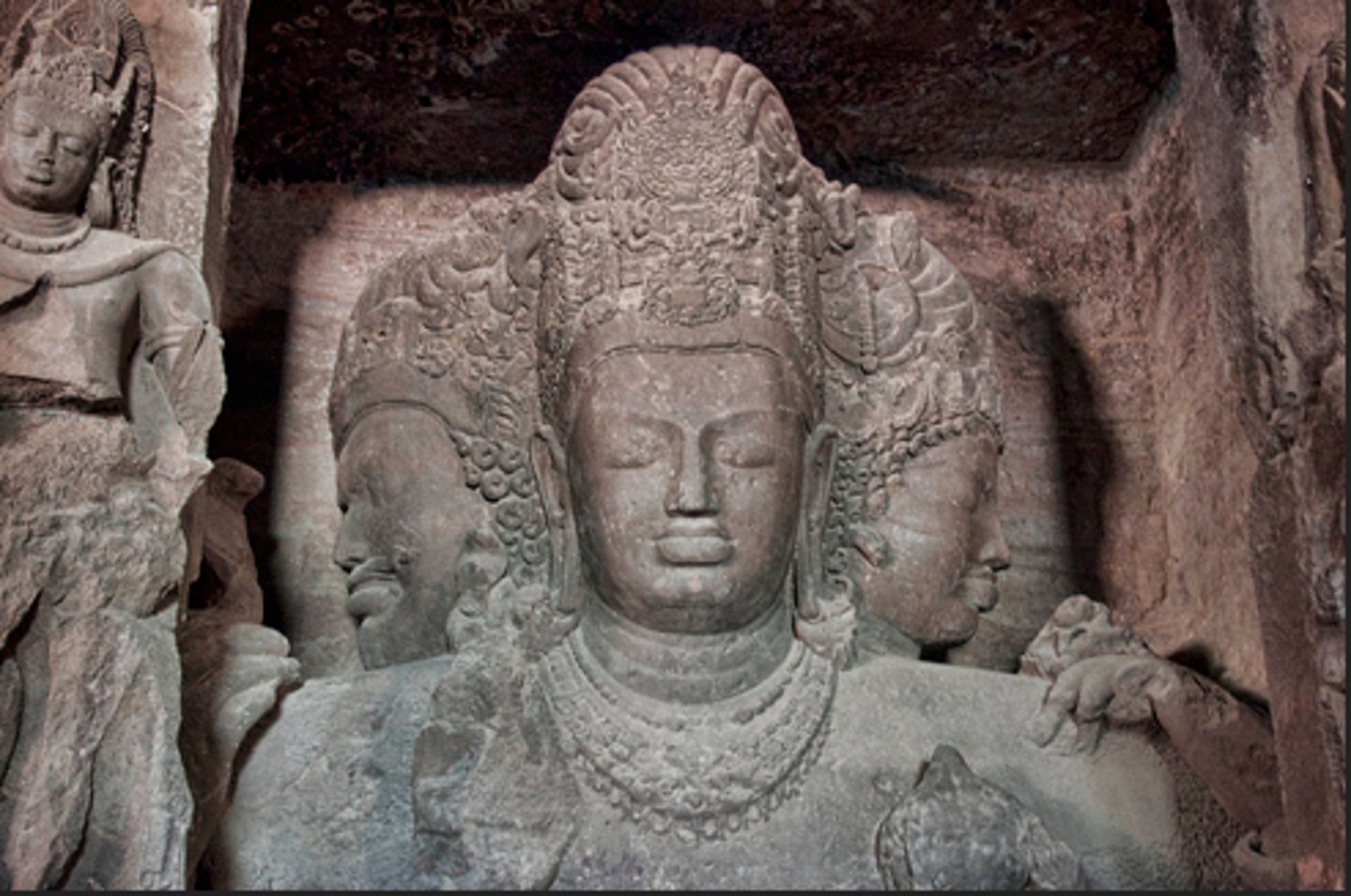
Title: Shiva Maheshvara
Site: Elephanta, Gupta Period (7th cent.)
Material: stone relief
three faces of Shiva not typical, but show three aspects of god
front - serene/peaceful; left - angry; right - more feminine, gentle
Shiva Maheshvara -> Shiva as Great Lord
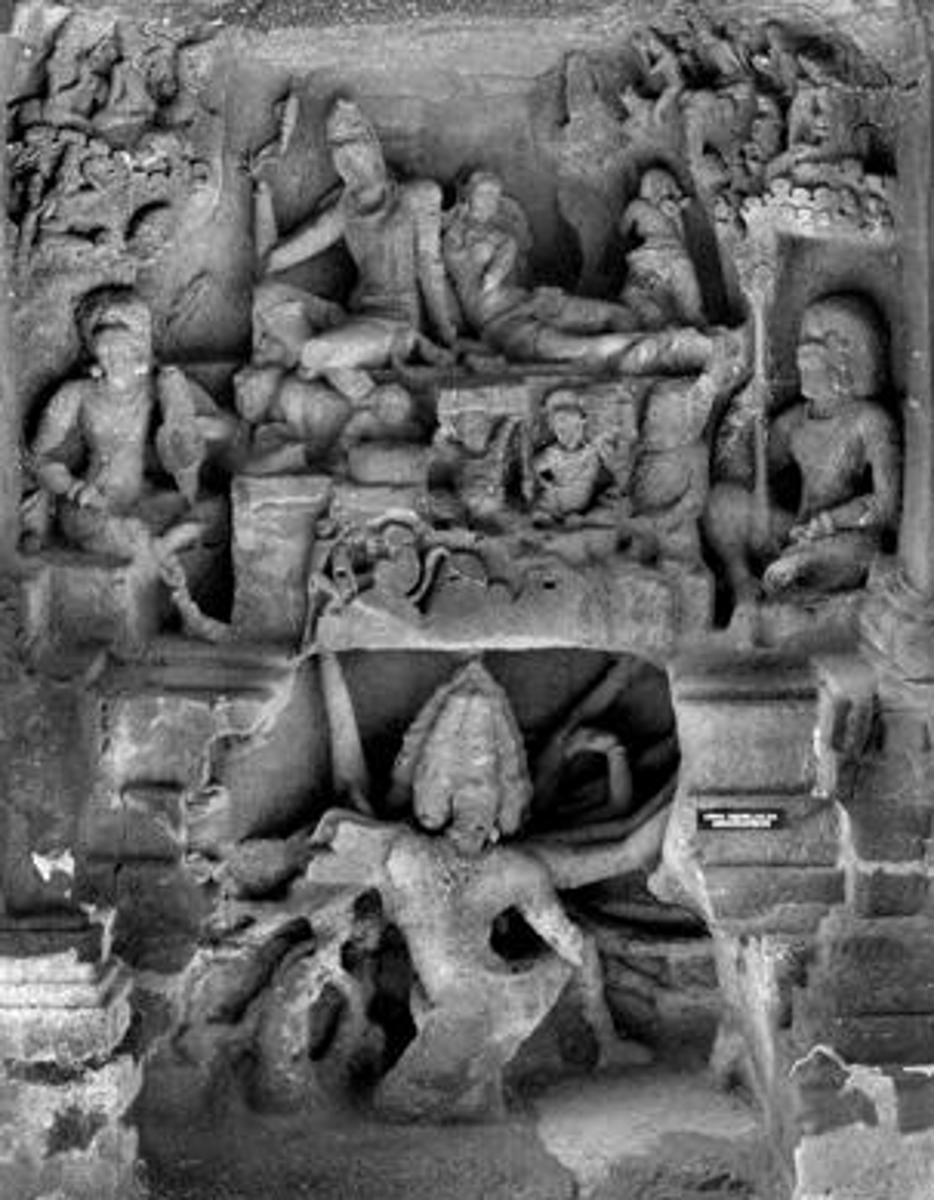
Title: Shiva and Parvati on Mt. Kailasha
Site: Kailasantha Temple @ Ellora, Gupta Period (8th cent.)
Material: stone relief
@ most important temple to Shiva in Hindu religion b/c located at Mt. Kailasa, the home of Shiva
carving shows Shiva casually defeating powerful king Ravanda while reclining with his wife Parvati
Ravanda's power shown through multiple heads and arms typically used for powerful deities

Title: Parashurameshvara Temple
Site: Orissa (Northern India), Gupta Period (c. 700 CE)
Theme: temple to Shiva
temple is separated into shikhara (tower) and mandap (porch)
tiered (steps) make up the shikhara
Hindu temples more focused on decorations on outside of building, worship typically takes place outside

Title: Brihadeshvara Temple
Site: Thanjavar (Southern India), Chola Dynasty (11th cent.)
Theme: temple to Vishnu
shikhara and mandap
tremendous feat to get multi-ton capstone to top of temple
temples in southern India typically larger in size than northern counterparts
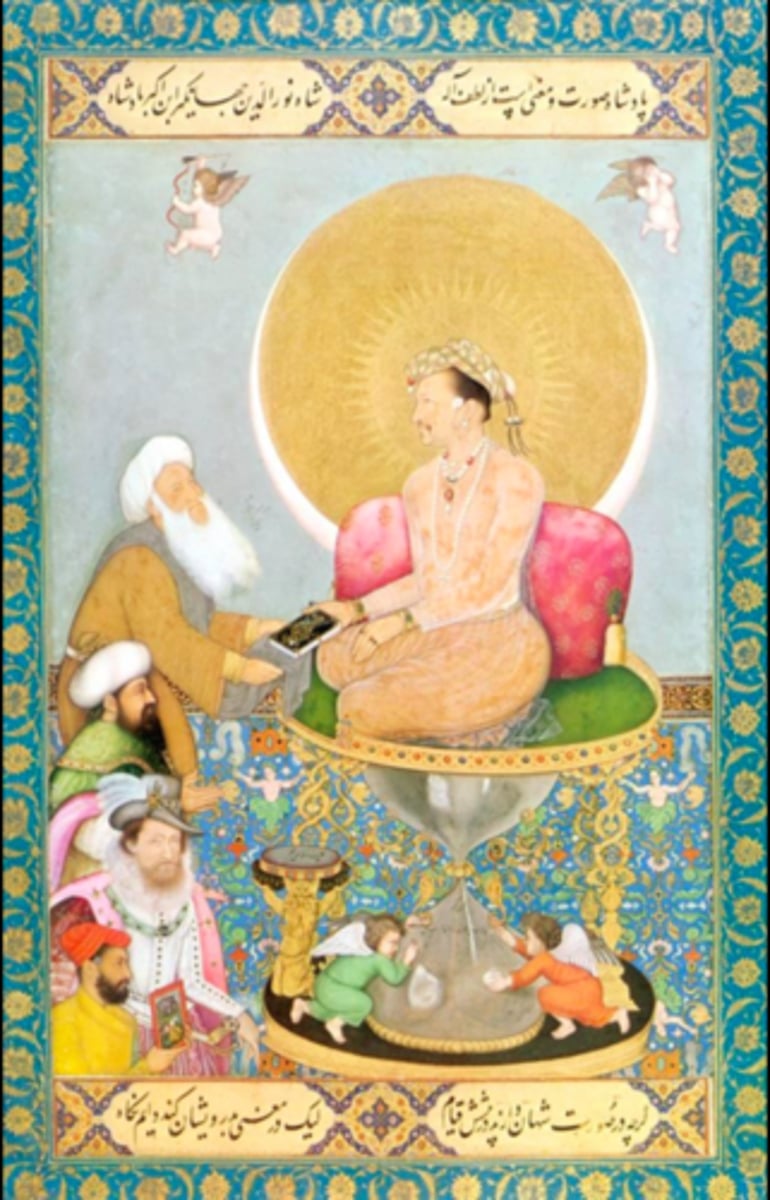
Title: Allegorical Representation of the Emperor Jahangir seated on the hourglass throne
Period: Mughal Period (Early 17th cent.); school of Jahangir
Material: gold and color on paper
characteristic use of bright colors and precise detailing in Moghul painting
artwork of this period were noticeably smaller in size
Emperor Jahangir, son of Akbar, very involved in production of art